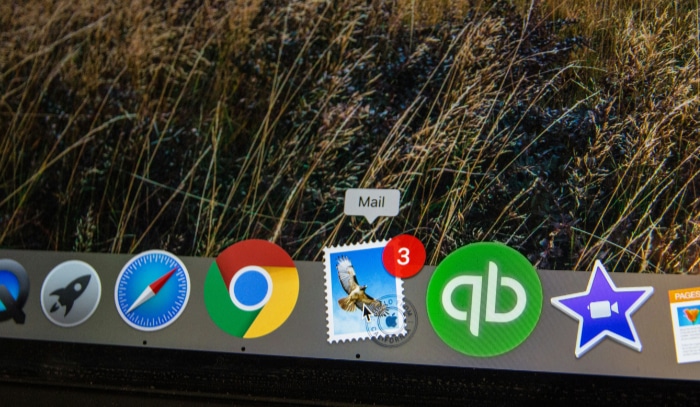Can You Get Hacked by Opening an Email? Safety Check

Emails: they're the digital envelopes of our era, ferrying everything from casual chats with friends to crucial work communications across the globe in seconds. Yet, amidst this convenience lurks a question that often goes unanswered: can opening an email expose you to hackers?
This concern isn't just a plot for a cyber-thriller movie; it's a real-life puzzle that we all face in our increasingly connected world.
The Basics of Email and Security
Emails are a staple in our daily lives, serving as a quick and efficient means of communication. However, with the convenience they offer, emails also bring certain risks, especially when it comes to security.
How Emails Work
Emails operate through a network of servers, using standard email protocols to send and receive messages. These protocols include SMTP (Simple Mail Transfer Protocol) for sending emails, IMAP (Internet Message Access Protocol) for email retrieval that leaves messages on the server, and POP3 (Post Office Protocol version 3) for downloading emails to the local device.
When you hit ‘send,' your email is routed from your device to an email server, which then forwards it to the recipient's email server.
Email Protocols: SMTP, IMAP, and POP3
Understanding the role of different email protocols is crucial in grasping how email security works. SMTP is used for sending emails and is crucial in the initial dispatch of messages from your device to the email server.
IMAP allows you to access your emails from any device by keeping them on the server, while POP3 is used when you want to store your emails locally and not on the email server. Each of these protocols has its own security aspects and vulnerabilities.
Common Misconceptions about Email Security
Many people believe that emails are inherently secure, but this isn't always the case. While most email services offer a basic level of security, vulnerabilities still exist.
For instance, without proper security measures, emails can be intercepted, read, or altered during transit. Understanding these common misconceptions is the first step toward securing your email communication.
How Hacking Occurs
Hacking might often be portrayed as a complex, mysterious process reserved for tech whizzes in dark rooms, but at its heart, it's about unauthorized access to data. It's crucial to grasp the basics of how hacking happens to safeguard your digital information, especially when it involves something as routine as opening an email.
Hacking and Cyber Threats
Hacking refers to the unauthorized intrusion into a device or network. Hackers use various methods to exploit vulnerabilities in software and hardware to gain access to systems and data.
Common examples include stealing sensitive information, infecting systems with malware, or hijacking websites. Understanding these terms and their implications is a vital step in recognizing and preventing potential threats.
Different Hacking Techniques
Hackers employ a range of techniques to breach security systems. These include phishing, where attackers trick victims into giving up personal information; using malware, a software designed to harm or exploit any programmable device or network; and exploiting software vulnerabilities, where hackers take advantage of weaknesses in software to carry out malicious actions.
Familiarity with these techniques allows individuals and organizations to better prepare and defend against them.
Phishing, Malware, and Spyware
Phishing involves deceptive attempts, usually through email, to obtain sensitive information by pretending to be a trustworthy entity. Malware, short for malicious software, refers to any program used to disrupt computer operations, gather sensitive information, or gain access to private computer systems.
Spyware, a type of malware, is software that aims to gather information about a person or organization without their knowledge. Understanding these terms is not just about expanding your vocabulary; it's about recognizing the tools in a hacker's arsenal.
Risks Associated with Opening Emails

Opening an email seems simple and harmless, yet this everyday action can expose you to various security risks.
Analyzing What Happens When You Open an Email
When you open an email, your device and email client process the content and any included code. Most times, this is harmless, but it can sometimes trigger malicious scripts.
Although just opening an email is generally safe, the risks increase if the email contains malicious links, attachments, or embedded code designed to compromise your security or steal your information.
The Possibility of Getting Hacked by Merely Opening an Email
The mere act of opening an email is unlikely to be hazardous. However, sophisticated cyber attacks can sometimes take advantage of vulnerabilities in the email client software itself.
These instances are rare and typically involve zero-day exploits, which are vulnerabilities unknown to the software maker at the time of the attack.
The Role of Email Clients in Security
Email clients, the programs you use to read and send emails, play a significant role in email security. They can offer various security features, such as blocking images or disabling links from unknown senders, to protect you from potential threats.
However, the level of security depends on both the configuration of the email client and the user's awareness of potential risks.
The Role of Attachments and Links in Emails
Attachments and links are common in emails, often providing useful information or resources. However, they can also serve as conduits for cyber threats.
How Attachments Can Be Used by Hackers
Attachments can contain malware or malicious code that, once opened, can infect your device. This malware can take various forms, from viruses that corrupt your files to ransomware that locks your data until a ransom is paid.
Being cautious about what you download and open from your emails is crucial, as it's a common method hackers use to spread malware.
The Danger of Executable Files and Scripts in Attachments
Executable files (like those ending in .exe) and scripts can be particularly dangerous as they can run programs directly on your device.
These files can be disguised as harmless documents or images, tricking the user into launching a malicious program. Understanding file types and the potential risks they carry can go a long way in protecting your system from these hidden threats.
The Risks of Clicking Links in Emails
Links in emails can lead to phishing sites or other harmful websites. These sites often mimic legitimate websites, tricking you into entering sensitive information like passwords or banking details.
Even if a link seems to come from a trusted source, it's important to verify it before clicking, as cybercriminals often spoof sender addresses to appear more trustworthy.
Protective Measures and Best Practices
While the digital world brings the convenience of instant communication, it also brings potential security risks, particularly through email. Adopting protective measures and following best practices can significantly enhance your security posture.
Awareness and proactive steps are key in defending against email-based threats.
Identifying Suspicious Emails
Learning to identify suspicious emails is your first line of defense. Key indicators include unexpected requests for personal information, poor spelling and grammar, and sender addresses that don't match the organization they claim to represent.
Also, be wary of emails that convey a sense of urgency, pressuring you to act quickly, as this is a common tactic used in phishing attacks.
Safe Email Practices
Adopting safe email practices is essential. This includes not opening attachments or clicking on links from unknown sources and being cautious even with emails from known contacts if they seem unusual.
Using strong, unique passwords for different accounts and enabling two-factor authentication wherever possible can also significantly enhance your email security.
Keeping Software and Antivirus Programs Up to Date
Regularly updating your software and antivirus programs is crucial. These updates often include patches for security vulnerabilities that have been discovered since the last version of the software.
Keeping your systems up to date ensures that you have the latest defenses against new threats and exploits.
Conclusion
Emails, an integral part of our daily lives, carry more than just messages—they bring with them a spectrum of security considerations. From understanding the basics of how emails work to recognizing the risks associated with opening them, it's clear that knowledge and vigilance are key.
Recognizing the potential dangers lurking in attachments and links, and adopting protective measures and best practices, can significantly mitigate the risks. Regular updates to your software, cautious handling of email content, and a keen eye for suspicious activity remain your best defenses.
Embracing these practices ensures not just the security of your digital communications but also the integrity of your personal information in this interconnected world.


